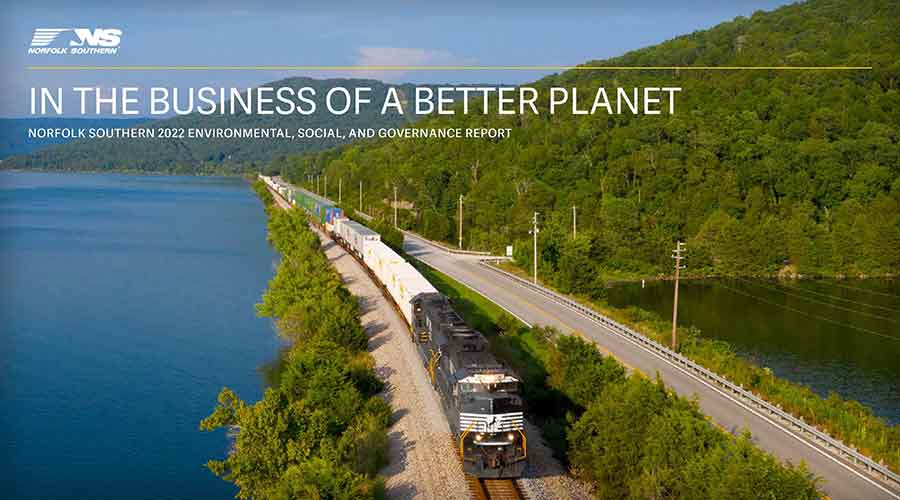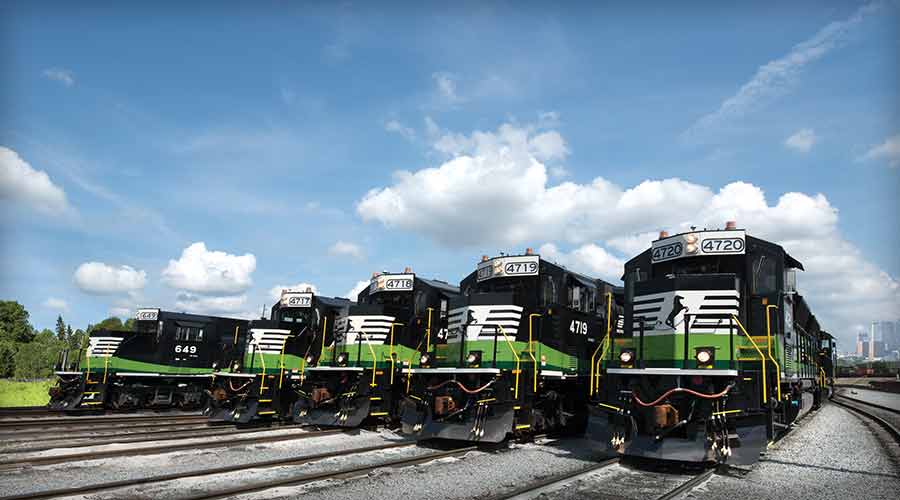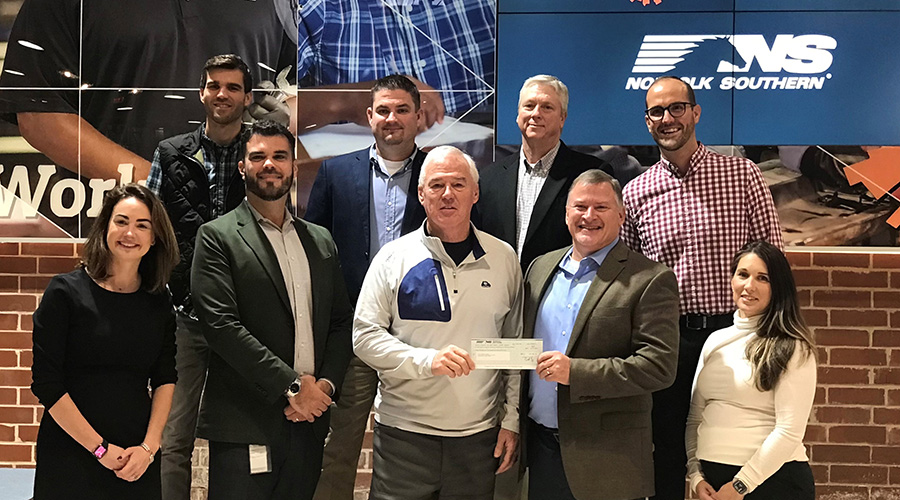New ESG report is ‘short and concise’ — and 'superb,' NS says
8/10/2022
By Jeff Stagl, Managing Editor
The title of Norfolk Southern Corp.’s 2022 environmental, social and governance (ESG) report is “In the Business of a Better Planet.”
Released Aug. 10, the 46-page document provides information, data and testimonials that help indicate just how well the Class I is faring in that regard. For NS Chief Sustainability Officer Josh Raglin, the Class has a good story to share with the publication — the railroad's 15th annual ESG report — which highlights many actionable items.
“We want to show we’re making a difference,” Raglin said during an interview with RailPrime. “We tried to keep it short and concise so it’s something people want to read and look at.”
What can be found in the words, images and numbers is evidence that NS is making progress toward its science-based target of reducing Scope 1 and 2 greenhouse-gas (GHG) emissions intensity 42% by 2034. Over the past two years, the railroad has registered a 5% improvement.
The Class I plans to meet the target by modernizing 950 locomotives by 2025; outfitting 1,550 road locomotives with energy management systems; adding distributed power systems to 120 additional locomotives; using data to identify and eliminate unnecessary idling; and continuing to employ alternative fuels to lower carbon intensity.
 In late April, NS Chief Sustainability Officer Josh Raglin (at lectern) spoke at an inaugural Sustainability Summit. The Class I hosted the event with Sustain SC at its 14,000-acre Brosnan Forest near Charleston, South Carolina. Norfolk Southern Corp.
In late April, NS Chief Sustainability Officer Josh Raglin (at lectern) spoke at an inaugural Sustainability Summit. The Class I hosted the event with Sustain SC at its 14,000-acre Brosnan Forest near Charleston, South Carolina. Norfolk Southern Corp.Locomotives have the biggest impact on the railroad’s air emissions, including GHG intensity, said Raglin. Since 2019, NS has improved its locomotive fuel efficiency 7%, enabling the railroad to move one ton of freight more than 460 miles while consuming only one gallon of diesel.
“We are making strides with our locomotives and on adopting technology. We are making changes with idling that are saving us 200,000 gallons of diesel per month,” he said.
NS also is exploring renewable fuels and biofuels. The Class I now is limited is using only 5% of biofuels in locomotives but is working with the original equipment manufacturers to boost that to 20%, said Raglin.
In addition, the railroad is interested in battery electric locomotives, which still require a lot of testing, as well as hydrogen-powered units.
“But a lot needs to be worked out with hydrogen,” Raglin said, referring to finding ways to safely store and use the volatile gas.
The ESG report also describes how NS is attempting to:
• cultivate biodiversity by permanently protecting 1,105 acres in South Carolina and restoring more than six miles of streams and 500 acres of wetlands;
• establish a team dedicated to operationalizing inclusion and using nationwide benchmarking to further a more diverse, equitable and inclusive organization;
• minimize waste in its supply chain by reclaiming over 1.6 million gallons of used oil and recycling all used rail and ties; and
• increase its total renewable energy usage in deregulated markets to about 26%, or 12% across the entire network.
In addition, the report stresses how the Class I earlier this year introduced a carbon calculator designed to help shippers estimate their emission reductions by using the railroad. To provide a comparison of shipping via NS or truck, the calculator draws from a sample size of over 7 million shipments, the entire fuel-burn cycle inclusive of all rail operations, data from 30 commodity types plus intermodal and 17 rail-car types, and information from over 75,000 U.S. cities.
“We want to expand the number of cities in North America,” said Raglin.
 Since diesel locomotives have the biggest impact on its air emissions, NS plans to modernize and upgrade units, and explore alternative-fueled options. Norfolk Southern Corp.
Since diesel locomotives have the biggest impact on its air emissions, NS plans to modernize and upgrade units, and explore alternative-fueled options. Norfolk Southern Corp.Most rail industry stakeholders say rail is two to four times more fuel efficient than trucking, but NS’ data shows rail is three to six times more efficient, he said.
The Class I is increasing its focus on engagement to get the word out about the railroad’s ESG efforts as well as to get its workforce to buy into the company’s objectives.
“Sustainability is everyone’s job. We are taking time to build that culture at NS,” said Raglin.
Prior to refining its overall strategy and releasing the report, NS last year assessed its ESG issues through a comprehensive stakeholder engagement process called a materiality assessment. The process helped further align the sustainability and corporate strategies; identify and prioritize business risks and opportunities; integrate key sustainability criteria into the decision-making process; and improve sustainability reporting efforts.
“Through the assessment, we narrowed 80 topics down to 20 that are important to stakeholder groups,” said Raglin.
NS also used information from leading sustainability reporting frameworks — such as the Global Reporting Initiative and Sustainability Accounting Standards Board — to formulate relevant topics. In addition, several stakeholder groups provided feedback, including the railroad’s executive leadership team, employees, investors, customers and suppliers.
NS aims to partner with customers and stakeholders to help them decarbonize their supply chains and advance sustainability.
“Customers have their own science-based targets on emissions. Rail can save them 60% to 90% on emissions,” said Raglin. “We see more of a focus now on partnerships, with more groups coming together. One company can’t do sustainability alone.”
There was quite the collaboration on pulling the new ESG report together — the effort involved two dozen contributors. The end result is quite worthy, Raglin believes.
“I think it’s a superb document,” he said.


